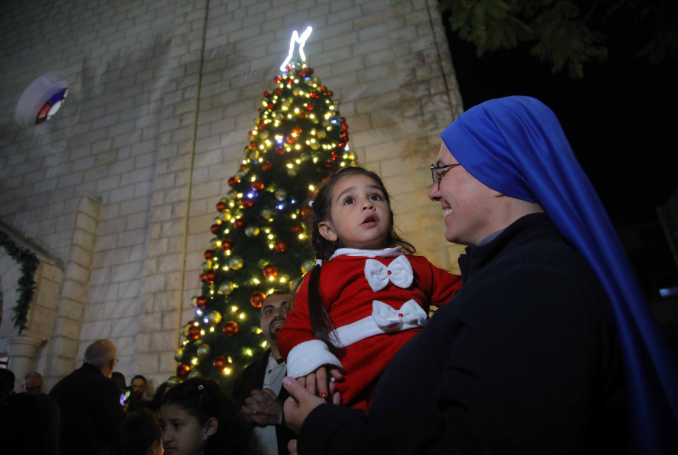
“Seven months after Hamas launched an 11-day war with Israel,” writes Patrick Kingsley, “the deadlock between Israel and the Islamist movement has returned to roughly where it was before the fighting started.”
Kingsley goes on to note that “not much has changed” in the relationship between Israel and Hamas. “The 14-year Israeli-Egyptian blockade of Gaza is intact,” he continues. “The Palestinian leadership remains split between Gaza and the West Bank.”
“Few see a way out of this cycle,” he concludes. What Kingsley calls a “cycle” is really an occupation in which Israel receives massive military aid from the United States. “As a militant group that refuses to recognize Israel,” he continues, “and, according to its founding charter, is committed to its destruction, Hamas has few other tools beyond unleashing a barrage of rockets every few years.”
Indeed, as Ramzy Baroud contends, armed resistance against the occupation nearly always meets with condemnation in the international press. “Some insist it is a counterproductive strategy,” he explains, while “others find it morally indefensible.”
The crux of this argument, Baroud continues, leaves out the many times that Palestinians have employed non-violence as a means to an end, most recently when Palestinians staged a General Strike on May 18, 2021, to protest Israel’s attack on the Gaza Strip.
For the first time in over 20 years, Palestinians united to close all economic, commercial and educational establishments in the occupied West Bank, including East Jerusalem, Gaza and the Palestinian villages and towns in Israel.
Moreover, Kingsley’s fails to mention, except in passing, the daily violence that all Palestinians experience under the Israeli occupation. When others call for non-violence only on the part of the occupied, Baroud concludes, they are placing sole responsibility squarely “on the shoulders of Palestinians.”
If Kingsley had listened to more than the select few Palestinian sources that he consulted, as well as listened to allies that actually pay attention to Palestinian voices, he might have reached a different conclusion. At the very least, his assumptions might have appeared more “nuanced,” a word that has become popular in mainstream sources the past few years.
In “’The Hamas Are Coming’: A View of the Violence from Inside Israel,” Israeli-born activist/author Miko Peled wonders if there is an ever-circulating memo to everyone on Israel TV demanding that “The Hamas” be used whenever they refer to Palestinians in Gaza. It is perhaps the same memo that flows around the New York Times.
Moreover, while its true, as Kingsley says, that the Palestinian leadership might be split, the people were more unified than ever during what he calls the “war with Israel.” In “Unity at Last: The Palestinian People Have Risen,” Ramzy Baroud first clarifies the language used by mainstream commentators, including Patrick Kingsley.
“This is not a ‘conflict,’” Baroud explains. “Neither is it a ‘dispute’ nor ‘sectarian violence’ nor even a war in the traditional sense.” Instead, he prefers “uprising,” partly because of the grassroots nature of the struggle against Israeli occupation, the latter which Kingsley barely mentions. For the first time in many years, Baroud continues, the Palestinian people were united in a movement that outshone divisions amount the leadership.
Kingsley’s approach continues the divide-and-conquer that Israel has tried to impose for decades. Moreover, his contention that Hamas celebrated a hollow victory is false. On May 20, 2021, and afterwards, people appeared in the streets throughout Palestine to celebrate what was considered a “victory of resistance” that was achieved by all, including Palestinians in the diaspora.
As evidence of this unity, Samah Sabawi covers the ways that Palestinians all over the world came together to produce Asheq min Felesteen, “A Lover from Palestine,” which was a song sung by Rahaf Shamaly in Gaza, Hamada Nasrallah and SolBand in Istanbul. Composed by Nahed Elrayes in Melbourne, the song was recorded in music studios in Palestine, Turkey and Australia and the video, directed by Mahmoud Abughalwa, came together from all three locations.
Nahed Elrayes, in his early 20s at the time, born in Canada and living in Australia, came up with the original idea of composing the words of a Darwish poem. “I never imagined how powerful the experience would ultimately be,” he explained, “or that our song would mirror the experiences of Palestinians this past May – that beautiful demonstration of unity across borders, from Yafa to Gaza to Australia… and the passing of the generational torch.”
That spirit of unity continues today into the 2021 Christmas season. In Gaza, Palestinian Christians gathered around the lighting of the Christmas tree inside the Holy Family Church, despite Israel’s ban on their travel to Jerusalem and Bethlehem. There they greeted Archbishop Pizzaballa, who arrived to show unity with the Palestinian Christians of besieged Gaza.
“We send, with our celebrations of Christmas, a message of love and peace to the whole Arab world,” declared Fuad Iyad, a young Palestinian Christian.
Kingsley sees no way out of the “cycle” because he ignores the major causes. Although the circumstances vary over time, the underlying problem remains the occupation. Several weeks after the May uprising, Hamas stated that “the occupier ‘has no right to self-defense’, but must ‘end its occupation of the Palestinian territories and its aggression against our Palestinian people.’”
Deconstructing Kingsley’s article on what he calls “the war,” written seven months after the fact, does not add much to what has already been written, at least not for readers attuned to the voices of Palestinians and their allies.
What it does point out is the necessity of listening to those voices rather than the consistent drone of the New York Times, for the latter stays stuck in its role of a grinch, a grump who wants to steal Christmas and silence his neighbors’ holiday cheer, transformed in this case to a slew of mainstream journalists who want to erase Palestine’s humanity altogether.
The post ‘Hamas, Hamas, Hamas’: On Why the New York Times Stays Stuck in the Role of Grinch appeared first on Palestine Chronicle.